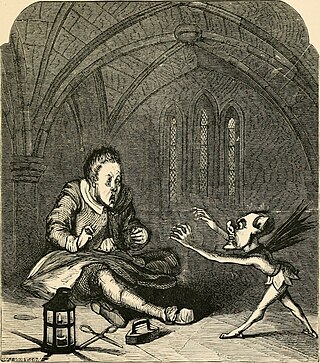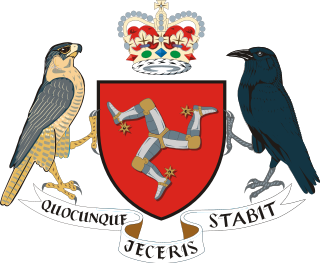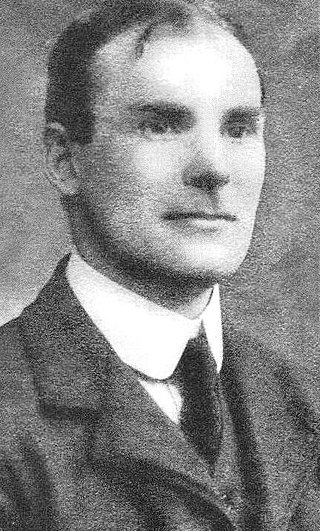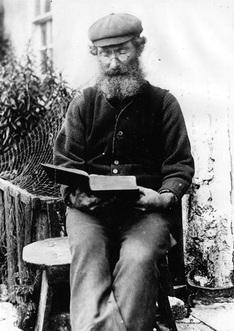
Sir Thomas Henry Hall Caine, usually known as Hall Caine, was a British novelist, dramatist, short story writer, poet and critic of the late 19h and early 20th century. Caine's popularity during his lifetime was unprecedented. He wrote 15 novels on subjects of adultery, divorce, domestic violence, illegitimacy, infanticide, religious bigotry and women's rights, became an international literary celebrity, and sold a total of ten million books. Caine was the most highly paid novelist of his day. The Eternal City is the first novel to have sold over a million copies worldwide. In addition to his books, Caine is the author of more than a dozen plays and was one of the most commercially successful dramatists of his time; many were West End and Broadway productions. Caine adapted seven of his novels for the stage. He collaborated with leading actors and managers, including Wilson Barrett, Viola Allen, Herbert Beerbohm Tree, Louis Napoleon Parker, Mrs Patrick Campbell, George Alexander, and Arthur Collins. Most of Caine's novels were adapted into silent black and white films. A. E. Coleby's 1923 18,454 feet, nineteen-reel film The Prodigal Son became the longest commercially made British film. Alfred Hitchcock's 1929 film The Manxman, is Hitchcock's last silent film.

In Manx folklore, a buggane was a huge ogre-like creature native to the Isle of Man. Some have considered them akin to the Scandinavian troll.

Illiam Dhone or Illiam Dhône, also known as William Christian, was a Manx politician and depending on viewpoint, patriot, rebel or traitor. He was a son of Ewan Christian, a deemster. In Manx, Illiam Dhone literally translates to Brown William—an epithet he received due to his dark hair—and in English he was called Brown-haired William. Dhone was a significant figure in the Isle of Man during the English Civil War and the Manx Rebellion of 1651. He was executed for high treason in 1663. In the centuries after his death he has become a "martyr and folk-hero, a symbol of the Island's cherished freedoms and traditional rights".

A Deemster is a judge in the Isle of Man. The High Court of Justice of the Isle of Man is presided over by a deemster or, in the case of the appeal division of that court, a deemster and the Judge of Appeal. The deemsters also promulgate the Laws on Tynwald Day by reading out brief summaries of them in English and Manx.

Hop-tu-Naa is a Celtic festival celebrated in the Isle of Man on 31 October. It is the celebration of the traditional Gaelic festival of Samhain, the start of winter. It is thought to be the oldest unbroken tradition in the Isle of Man.

John Allen Mylrea MHK, was a member of the House of Keys, Chairman of the Isle of Man Steam Packet Company and a director of Dumbell's Bank, who in the late 19th century played a prominent part in the arts and culture of the Isle of Man.

Sir Derwent Hall Caine, 1st Baronet was a British actor, publisher and Labour then National Labour politician.
Samuel Rutter was Bishop of Sodor and Man between 1661 and 1662.
John Joseph Kneen was a Manx linguist and scholar renowned for his seminal works on Manx grammar and on the place names and personal names of the Isle of Man. He is also a significant Manx dialect playwright and translator of Manx poetry. He is commonly best known for his translation of the Manx National Anthem into Manx.

The Manxman is a novel by Hall Caine, first appearing as a serial in The Queen, The Lady's Newspaper and Court Chronicle between January and July 1894. Published as one volume in August 1894 by Heinemann, The Manxman ended the system of three-volume novels. A highly popular novel of its period, it was set in the Isle of Man and concerned a romantic triangle. The novel has as its central themes, the mounting consequences of sin and the saving grace of simple human goodness.

The Master of Man: The Story of a Sin was a best-selling 1921 novel by Hall Caine. The fictional story is set on the Isle of Man and is concerned with Victor Stowell, the Deemster's son, who commits a romantic indiscretion and then gives up on all of his principles in order to keep it a secret. However, in the face of the mounting consequences, Victor confesses publicly to his crime and is punished, but redemption comes through a woman's love. The penultimate of Caine's novels, it is romantic and moralistic, returning to his regular themes of sin, justice and atonement, whilst also addressing "the woman question." It was adapted for a film entitled Name the Man in 1924 by Victor Sjöström.

The Woman of Knockaloe: A Parable is a melodramatic novel by Hall Caine first published in 1923. Set on the Isle of Man during the First World War, a young woman finds herself drawn to one of the nearby German internees. They begin a romance in the face of the fierce hostility of the local community which eventually drives them to commit suicide. The story has been described as a "minor masterpiece".

William Walter Gill (1876–1963) was a Manx scholar, folklorist and poet. He is best remembered for his three volumes of A Manx Scrapbook.

The Bondman is an 1890 best-selling novel by Hall Caine set in the Isle of Man and Iceland. It was the first novel to be released by the newly established Heinemann publishing company. It was a phenomenal success and was later adapted into a successful play and two silent films.

John Quine was a Manx clergyman, scholar, novelist, and playwright. He is perhaps best remembered for his 1897 novel, The Captain of the Parish.

Edward Faragher (1831–1908), also known in Manx as Ned Beg Hom Ruy, was a Manx language poet, folklorist and cultural guardian. He is considered to be the last important native writer of Manx and perhaps the most important guardian of Manx culture during a time when it was most under threat. The folklorist, Charles Roeder, wrote that Faragher had "done great services to Manx folklore, and it is due to him that at this late period an immense amount of valuable Manx legends have been preserved, for which indeed the Isle of Man must ever be under gratitude to him."
She's All The World To Me is a short early novel by Hall Caine published in 1885 by Harper & Brothers. The novel was the first of Caine's works to be set on the Isle of Man and it centered on themes that would become integral to his later novels: a love triangle, secret mounting sins and eventual redemption. It was published only in America due to copyright problems, but Caine was subsequently able to reuse a great deal of its material in later novels, notably in The Deemster.

Sir James Gell, was a Manx lawyer, who was the First Deemster and Clerk of the Rolls in the Isle of Man. He was also the first Manxman to become Attorney General of the Isle of Man.

The Deemster is a 1917 American drama silent film, released by Arrow Film Corporation, directed by Howell Hansel, starring Derwent Hall Caine and Marian Swayne.
Ewan Christian was a Manx politician and landowner on the Isle of Man. He held the position of deemster for 51 years from 1605 until his death. He also held the position of Deputy-Governor of the Isle of Man 1634 to 1637. He was the father of controversial Manx political revolutionary and folk-hero Illiam Dhone.





















